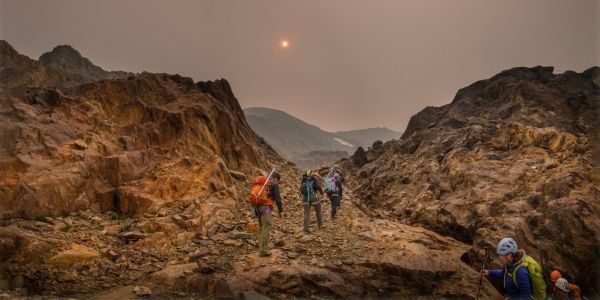Zac Robinson remembers hiking through B.C.’s Monashee Mountains last August and, on a cloudless day, staring directly into the sun.
What made his look upwards a possibility was the smoke collecting from more than 560 B.C. forest fires all burning in unison, making the air quality in Western Canada the most hazardous in the world.
“It was dark and eerie, it was wild, and it shaped our conversations, which turned from the fire and the smoke to how fire is connected to larger processes at work that are pushing change in the alpine,” said Robinson, a mountain historian at the University of Alberta, who was leading a dozen students through a skills course as part of the Alpine Club of Canada’s summer-long general mountaineering camp.
“We would wake up in the morning and brush ash off our tent that had accumulated in the night. Then we would talk about what this material that is just falling everywhere does to glaciers.”
Continue reading at University of Alberta.
Image via Mary Sanseverino.


